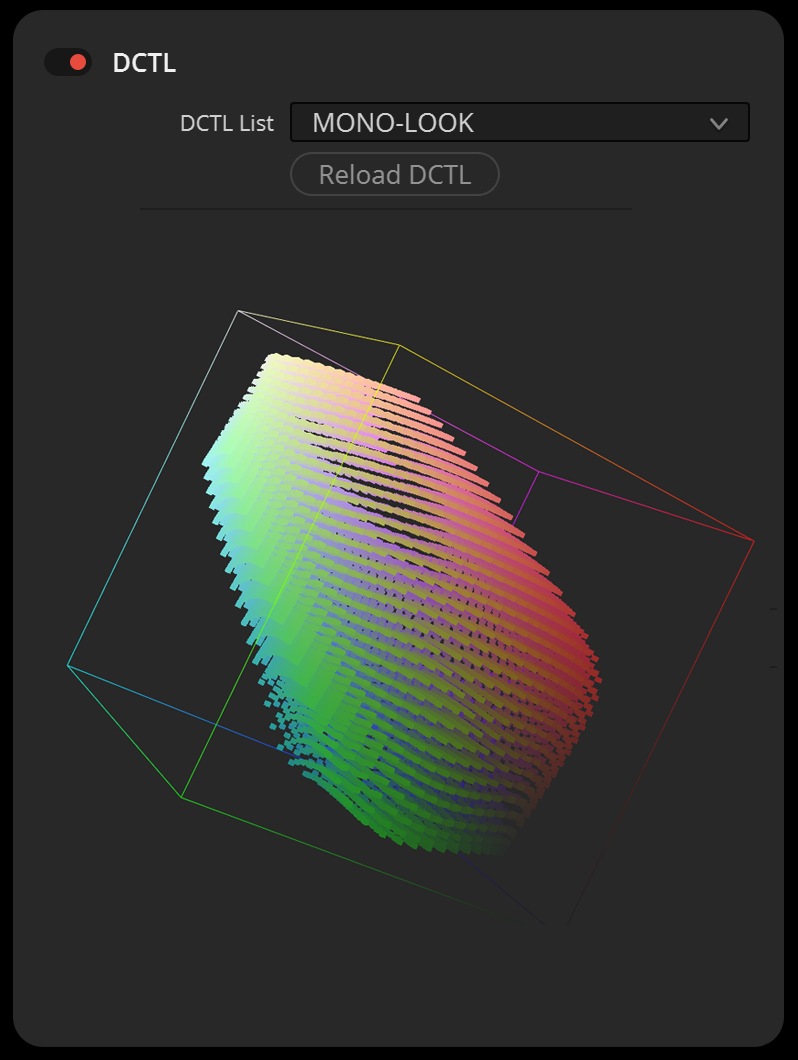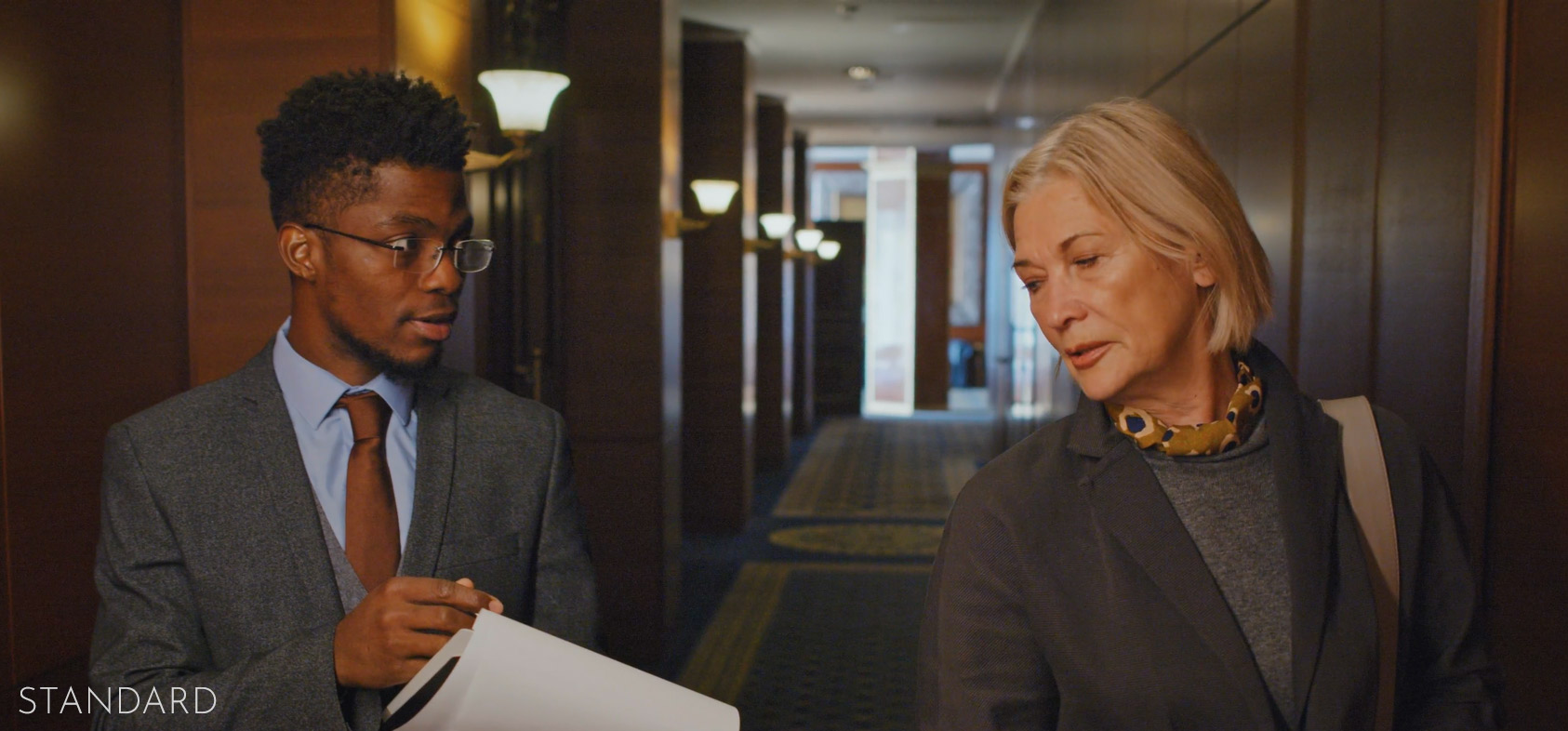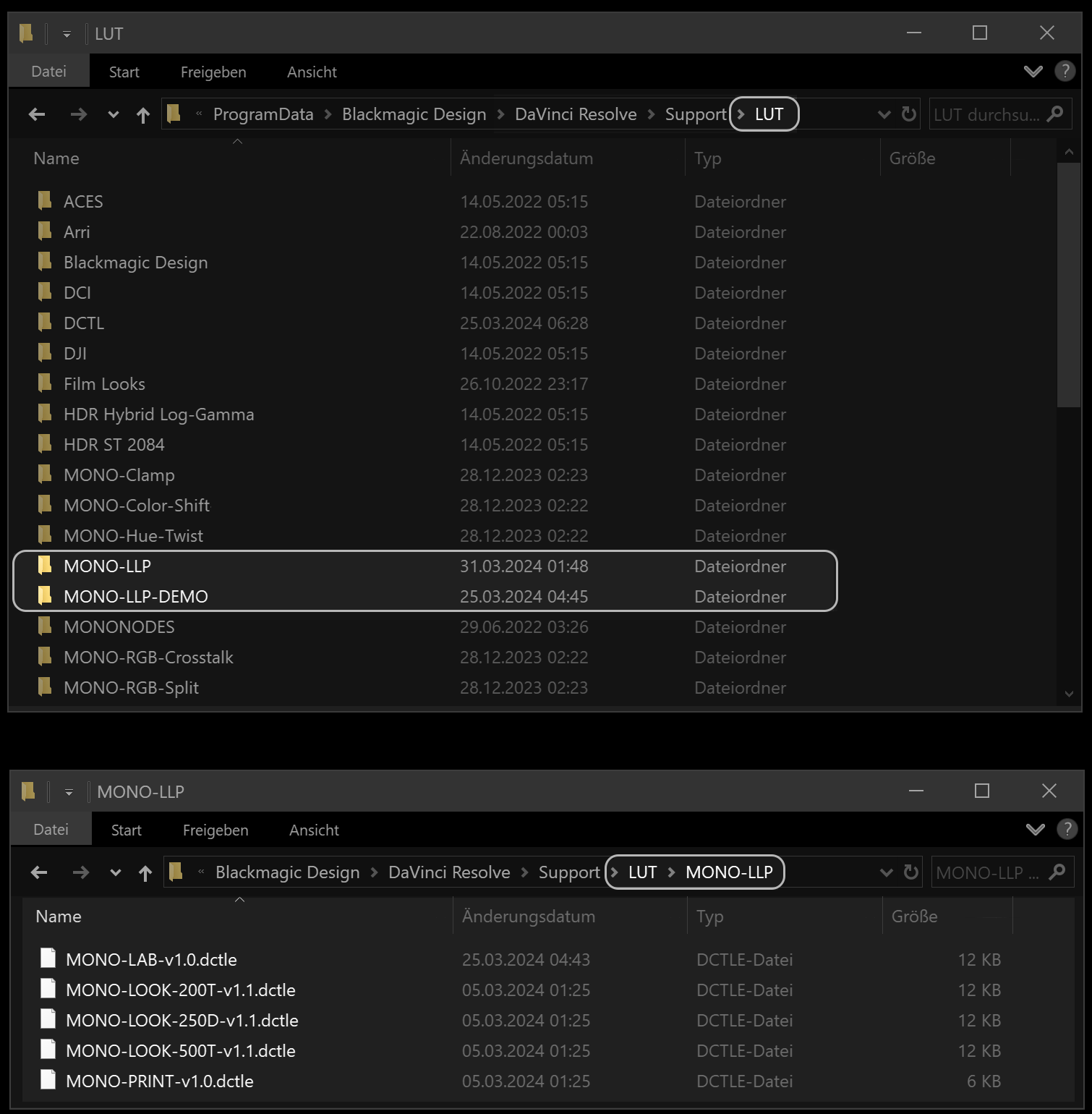LOOK / LAB / PRINT
DCTLS
LOOK
DCTL
The ‘MONOLOOK’ DCTLs in our pack are inspired by the classic film aesthetics of Kodak and Fuji. These tools offer three specific negative film emulations, each carefully designed to capture the unique color qualities of analog film. They’re tailored for filmmakers looking to blend the timeless appeal of film with the clarity of digital sensors, enabling a film-like look in their projects.
In developing this tool, my goal was to come very close to the essence of film without being rigidly bound by it. I focused on reproducing film’s most appealing characteristics, allowing enough flexibility for users to further shape and refine the look throughout the grading process. Currently, the pack includes these three distinct looks, each offering a unique approach to achieving a film-like aesthetic.
250D
“MONO-LOOK 250D” draws inspiration from the wide tonal range and dynamic colors found in superior 250 ISO daylight film. It’s important to note that “MONO-LOOK-250D” is not connected to, supported by, or made by Kodak or any film-making company.
500T
“MONO-LOOK 500T” draws inspiration from the wide tonal range and dynamic colors found in superior 500 ISO tungsten film. It’s important to note that “MONO-LOOK-500T” is not connected to, supported by, or made by Kodak or any film-making company.
200T
“MONO-LOOK 200T” draws inspiration from the wide tonal range and dynamic colors found in superior 200 ISO tungsten film. It’s important to note that “MONO-LOOK-200T” is not connected to, supported by, or made by Kodak or any film-making company.
All profiles were meticulously crafted through extensive research and precise analysis of film characteristics, with a particular emphasis on the distinctive qualities of film stocks. The process involved scrutinizing both analog scans and digital resources, allowing for a comprehensive understanding of the films’ visual nuances.
LAB
DCTL
The “MONOLAB DCTL” allows users to precisely fine-tune the look of their footage, providing detailed control over color grading for a more refined and personalized visual aesthetic.
EXPOSURE
Our DCTL tool’s Exposure slider functions identically to the Exposure control in the HDR grading wheels.
FILMIC CONTRAST: THE FILM CURVE
The DCTL simplifies the creation of a film-like contrast curve. This technique involves steepening the contrast in the midtones, enhancing details in critical areas such as facial features, and then gracefully tapering it off in the highlights, emulating the classic aesthetic of negative film. Adjusting Contrast and Pivot, along with Gamma and Gain, is key to emulating the distinctive quality found in negative film, making the process straightforward, as demonstrated in the image.
SUBTRACTIVE
SATURATION
& DENSITY
Subtractive Sat Slider: This tool adjusts hue values through subtractive color adjustments.
Density Slider: This tool simultaneously reduces luminance while increasing saturation. This results in rich, saturated hues, giving footage a classic, cinematic quality.
Deep Slider: This slider regulates the areas of impact for the Saturation and Density adjustments in an image. As the value of the “Deep” slider increases, it progressively excludes the highlights from being affected, focusing the adjustments more on the midtones and shadows. The slider itself does not directly alter the image but controls where Saturation and Density changes are applied.
DESAT HIGHLIGHTS
In negative film processing, highlights can exhibit a unique quality where intense light results in lower saturation, a feature that digital sensors don’t naturally replicate. This quality contributes to what many describe as a “filmic” look, which is often sought after in digital color grading to emulate the aesthetic qualities of traditional film. The Desat Highlights Slider is designed to mimic this aspect of film behavior, allowing digital footage to achieve a similar aesthetic quality. By desaturating highlights, it helps in creating an image that resonates with the soft, natural feel typical of film imagery.


TWO STRIP
The Two-Strip Technicolor process was an early method in color filmmaking, using red and green filters to record two primary colors. This technique created a unique color palette, different from today’s full-color films. Our Two-Strip slider lets you add this effect to your digital films, giving you control over the intensity of these classic red and green tones. It’s a simple way to bring the distinctive look of early color cinema to your projects.
BLEACH BYPASS
Bleach Bypass is a film processing technique that creates images with striking contrast and muted colors by skipping the bleaching step. This leaves silver in the emulsion, blending color and black-and-white elements for a distinctive, layered look. The result? A film with a gritty, stark appearance that’s highly valued for its artistic depth.
DCTL
This DCTL utilizes DaVinci Resolve’s free LUTs, enabling users to split them into Color and Luminosity components. Additionally, the DCTL features a shadow slider for detailed shadow adjustments, along with separate sliders for red, green, and blue shadows, allowing users to precisely modify the shadow region for deep, neutral blacks or softer, ‘milky’ blacks.



COLOR
This setting influences only the image’s colors, altering hues, saturation, and color balance without affecting the brightness or contrast.
COLOR & LUMINOSITY
Setting both the Color and Luminosity sliders to 100% applies the LUT to the image in its entirety, without splitting its components.
LUMINOSITY
This setting impacts the image’s brightness and contrast, adjusting the lightness and darkness without altering the colors.
SHADOWS
The DCTL includes shadow sliders to adjust the RGB values, enabling the manipulation of deep and lifted shadows along with the introduction of color tints in shadows by lifting the red, green or blue channels.
LOOK DEVELOPMENT
The DCTLs enable swift and versatile look development, allowing for the quick creation of a range of aesthetic styles. From flat, low contrast, vibrant visuals to harsher tones reminiscent of a bleach bypass look, these tools offer the flexibility to rapidly experiment with and achieve diverse looks with efficiency.
NODE TREE
WORKFLOW
The “Looks” in this pack are designed specifically for ARRI ALEXA LogC3. If you’re working with different camera systems, my recommendation is to start your node tree with a Color Space Transform (CST). This will allow you to convert your camera’s log space to ARRI ALEXA LogC3. The “LOOK” DCTL in this pack generates an output that mimics the qualities of negative film emulation, similar to a log film negative scan. Once you’ve applied a “LOOK”, you can further refine it using the “LAB” DCTL, followed by incorporating the “PRINT” DCTL as the final step in your node tree.
You have the freedom to implement further grading at any moment, yet it’s recommended to introduce this step between the ‘LAB’ and ‘PRINT’ DCTLs. Remember, these steps are guidelines rather than strict rules. You are encouraged to explore and adapt them. Experiment to discover what works best for you, with the goal of achieving the most satisfying and visually pleasing results.
This PACK is fully compatible with other DCTL packs from MONONODES, including Color Shift, Hue Twist, RGB Crosstalk, and RGB Split Tone.
INFO
Optimized for
ARRI ALEXA LogC3
Our DCTLs are specifically designed for the LogC3 color space, ideal for ARRI camera users. For filmmakers using cameras like RED or Blackmagic with different LOG formats, a simple conversion is needed. By applying a Color Space Transform (CST), you can adjust your footage to match the LogC profile, ensuring compatibility with our DCTLs.
Why Replicate Negative Film
in Digital?
Emulating the aesthetic of traditional analog film, such as Kodak or Fuji, in digital cinematography combines a reverence for cinematic history with the advantages of modern technology. Our DCTL tools aim to recreate the distinct qualities of film within a digital context. While digital technology offers precision and a broad dynamic range, it lacks the organic feel of film. Our goal is to merge digital’s clarity with film’s aesthetic subtleties, preserving the emotional impact of analog film. This endeavor blends art with science, requiring both detailed research and creative input to achieve a visually appealing digital film look.
Looks:
DCTL vs. LUT
DCTLs operate within a 32-bit environment, enabling highly precise and smooth color adjustments through direct computational logic, ensuring accuracy. Conversely, LUTs rely on predefined color mappings and necessitate interpolation for colors not explicitly defined, potentially introducing inaccuracies, particularly in nuanced color transitions.
VIDEO
FREE DEMO VERSION
ko-fi.com / 2 MB
This version includes a watermark, displayed as a grid
of black plus signs on the image. The demo version is perfect
for users who want to explore the software’s features
and functionalities before making a purchase.
How to Correctly Install MONO-PRINT.dctl
Step 1: Prepare the Folder
- Locate the “MONO-LPP” folder containing the “MONO-PRINT.dctl” file.
- Ensure this folder is not inside another folder.
Step 2: Install the Folder
- Drag and drop the “MONO-LPP” folder into your software’s LUT folder.
- Confirm the folder is directly in the LUT folder without any nesting.
Check the screenshot above on how the folder should look in the LUT directory.
If you face any issues, feel free to contact support.

















